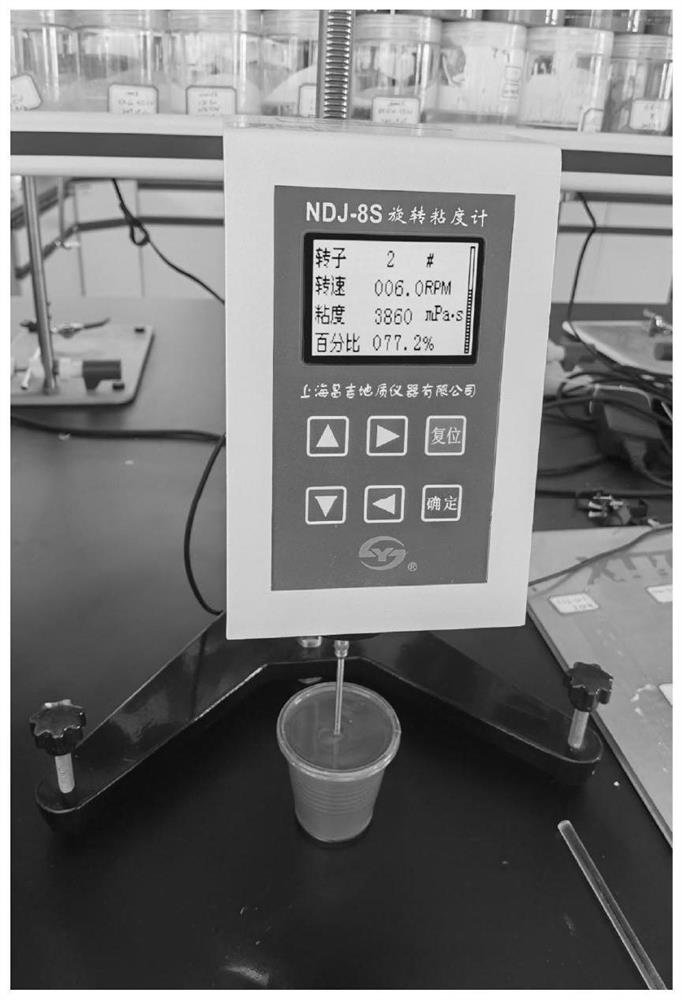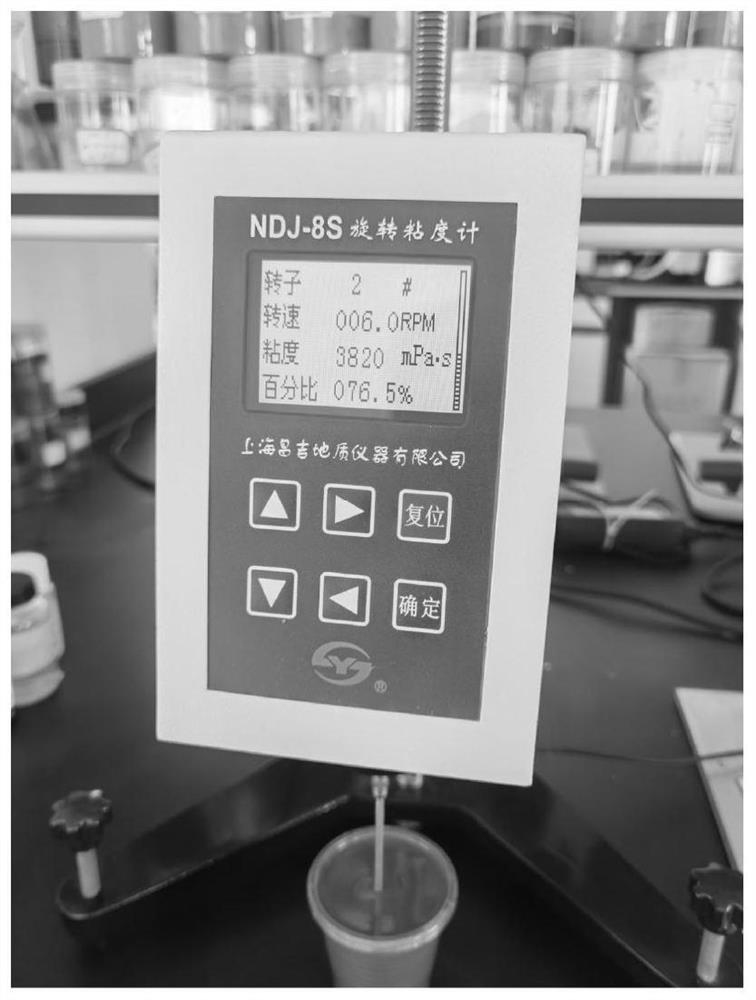Organic-inorganic hybrid cross-linked heat-conducting silica gel and preparation method thereof
A heat-conducting silica gel, hybrid cross-linking technology, applied in the field of heat-conducting materials, can solve the problem of low thermal conductivity of the system as a whole, and achieve the effects of excellent thermal conductivity, good mechanical properties, and suitable operating viscosity
- Summary
- Abstract
- Description
- Claims
- Application Information
AI Technical Summary
Problems solved by technology
Method used
Image
Examples
Embodiment 1
[0042] The mass proportion of each component in this example is: vinyl silicone oil 29.7%, hydrogen-containing silicone oil 5.4%, dimethyl silicone oil 4.34%, chemically modified inorganic thermally conductive filler 41.59%, copper powder 17.82%, white carbon black 0.96% %, graphene 0.15%, catalyst 0.03%, inhibitor 0.0075%, wherein the inorganic filler to be modified adopts alumina, and the mass ratio of the coupling agent to the inorganic filler to be modified is 0.02:1.
[0043] The organic-inorganic hybrid cross-linked thermally conductive silica gel is prepared by using the components listed above in terms of mass proportion, and the specific steps are as follows:
[0044] S1a. Weigh 80g of deionized water into an Erlenmeyer flask, place it in a constant temperature water bath for stirring, add 2.4g of KH570 dropwise to it, heat and stir it in a constant temperature water bath at 60°C for 2 hours after adding it completely, and then gradually add 120g of alumina to be modi...
Embodiment 2
[0048] The mass proportion of each component in this example is: vinyl silicone oil 29.7%, hydrogen-containing silicone oil 5.4%, dimethyl silicone oil 4.34%, chemically modified inorganic thermally conductive filler 41.59%, copper powder 17.82%, white carbon black 0.96% %, graphene 0.15%, catalyst 0.03%, and inhibitor 0.0075%, wherein the inorganic filler to be modified is alumina, and the mass ratio of the coupling agent to the inorganic filler to be modified is 0.05:1.
[0049] The organic-inorganic hybrid cross-linked thermally conductive silica gel is prepared by using the components listed above in terms of mass proportion, and the specific steps are as follows:
[0050] S1a. Weigh 80g of deionized water into an Erlenmeyer flask, place it in a constant temperature water bath for stirring, add 2.4g of KH570 dropwise to it, heat and stir it in a constant temperature water bath at 60°C for 2 hours after adding it completely, and then gradually add 48g of alumina to be modif...
Embodiment 3
[0054] The mass proportion of each component in this example is: vinyl silicone oil 29.7%, hydrogen-containing silicone oil 5.4%, dimethyl silicone oil 4.34%, chemically modified inorganic thermally conductive filler 41.59%, copper powder 17.82%, white carbon black 0.96% %, graphene 0.15%, catalyst 0.03%, inhibitor 0.0075%, wherein the inorganic filler to be modified adopts alumina, and the mass ratio of the coupling agent to the inorganic filler to be modified is 0.035:1.
[0055] The organic-inorganic hybrid cross-linked thermally conductive silica gel is prepared by using the components listed above in terms of mass proportion, and the specific steps are as follows:
[0056] S1a. Weigh 80g of deionized water into an Erlenmeyer flask, place it in a constant temperature water bath for stirring, add 2.4g of KH570 dropwise to it, heat and stir it in a constant temperature water bath at 60°C for 2 hours after adding it completely, and then gradually add 68.57g of alumina to be m...
PUM
| Property | Measurement | Unit |
|---|---|---|
| particle diameter | aaaaa | aaaaa |
| viscosity | aaaaa | aaaaa |
| viscosity | aaaaa | aaaaa |
Abstract
Description
Claims
Application Information
 Login to View More
Login to View More - R&D
- Intellectual Property
- Life Sciences
- Materials
- Tech Scout
- Unparalleled Data Quality
- Higher Quality Content
- 60% Fewer Hallucinations
Browse by: Latest US Patents, China's latest patents, Technical Efficacy Thesaurus, Application Domain, Technology Topic, Popular Technical Reports.
© 2025 PatSnap. All rights reserved.Legal|Privacy policy|Modern Slavery Act Transparency Statement|Sitemap|About US| Contact US: help@patsnap.com



